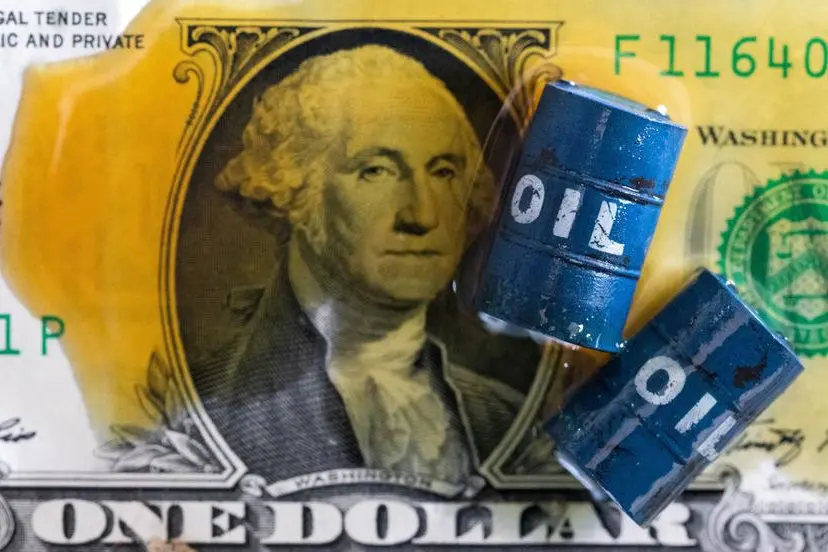PHOTO
Oil, miniatures of oil barrels and U.S. dollar banknote are seen in this illustration taken, June 6, 2023. REUTERS/Dado Ruvic/Illustration
Oil prices fell in choppy trade on Thursday, and looked set to snap a two-session streak during which they gained about 3% due to growing supply risks amid simmering tensions in the Middle East.
Brent crude futures fell 25 cents, or 0.3%, at $78.08 a barrel by 0650 GMT, while U.S. West Texas Intermediate crude lost 13 cents, or 0.3%, to $75.10. Both the benchmarks had recovered from near-2024 lows in early trade on Thursday, before turning negative.
The potential for Middle East supply disruptions have caused volatility, with the killing of senior members of militant groups Hamas and Hezbollah last week raising the possibility of retaliatory strikes by Iran against Israel.
However, supply has not been affected so far, although attacks on ships in the Red Sea have forced tankers to take longer routes.
"The market has been on edge as it awaits a response from Iran," ANZ Research said in a note.
Libya's National Oil Corporation has declared force majeure in its Sharara oilfield from Tuesday, a statement said, adding that the company had gradually reduced the field's production due to protests.
Crude inventories in the United States, the world's largest oil consumer, fell 3.7 million barrels, data showed, far exceeding analyst expectations of a 700,000-barrel draw and marking a sixth straight weekly decline to six-month lows.
"This suggests demand for physical barrels remains robust, despite concerns about weak economic activity," ANZ analysts said in the note.
Analysts at Citi said there was a possibility of a bounce in prices to the low-to-mid-$80s again for Brent.
"Upside risks in the market remain, from still-tight balances through August, heightened geopolitical risks across North Africa and the Middle East, the possibility of weather-related disruptions through hurricane season, and light managed money positioning," Citi said in a note.
(Reporting by Arathy Somasekhar in Houston and Sudarshan Varadhan in Singapore; Editing by Tom Hogue, Stephen Coates and Sharon Singleton)





















